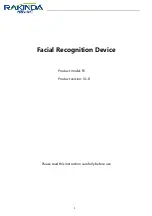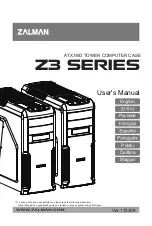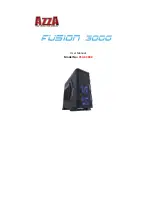
29 |
P a g e
OPERATION
T
HEORY OF
O
PERATION
Heating
When powered, the incubator heats to and maintains a user-selected target setpoint in the incubation
chamber. The incubator senses the chamber air temperature using a solid-state probe mounted on the
chamber interior wall. When the incubator detects that the chamber temperature has dropped below the
target setpoint, it pulses power to heating elements on the surface of the air-jacket insulation space and in
the outer chamber door. Insulation is provided by the air-filled jacket surrounding the incubation chamber
on the top, bottom, back, and left and right sides.
The incubator uses Proportional – Integral – Derivative (PID) control to avoid significantly overshooting the
setpoint. This means the rate of heating slows as the chamber temperature approaches the target
temperature. If the chamber temperature is above the setpoint, the incubator uses minimum heating to
control the rate of cooling and avoid dipping below the setpoint.
Additionally, the PID loops optimize heating rates for the temperature environment around the incubator.
If the incubator is operating in a cool room, it will increase the length of heating pulses to compensate.
Likewise, when operating in a warm room the incubator uses shorter pulses. If the ambient temperature
conditions change significantly, there may be minor over or undershoots as the incubator adapts.
The incubator relies on natural heat radiation for cooling. The unit can achieve a low-end temperature just
above the ambient room temperature plus the internal waste heat of the unit.
The outer chamber door is self-heating to bolster the thermal uniformity and stability of the chamber
and to minimize condensation on the glass viewing door. The inner glass door will cool while the
chamber door is opened, eventually leading to condensate on the door and impacting the chamber
temperature stability and uniformity. Minimize sample viewing times when possible.
Humidification
Passive humidification is provided by filling the humidification pan included with the unit. The pan is
then placed on the heated chamber floor. Evaporation, driven in part by heating, raises the relative
humidity percentage (RH%) of the chamber. A copper token included with the pan helps to
significantly slow the growth of microbiological populations in the humidification water supply.
The incubator must be humidified in order to achieve its stated temperature uniformity specification.
Содержание SCO10A
Страница 1: ...AIR JACKETED CO2 INCUBATOR 110 120 Volts Installation Operation Manual SCO10A SCO5A...
Страница 6: ...6 P a g e TABLE OF CONTENTS...
Страница 24: ...24 P a g e INSTALLATION...
Страница 26: ...26 P a g e SYMBOLS...
Страница 59: ...59 P a g e PARTS...
















































